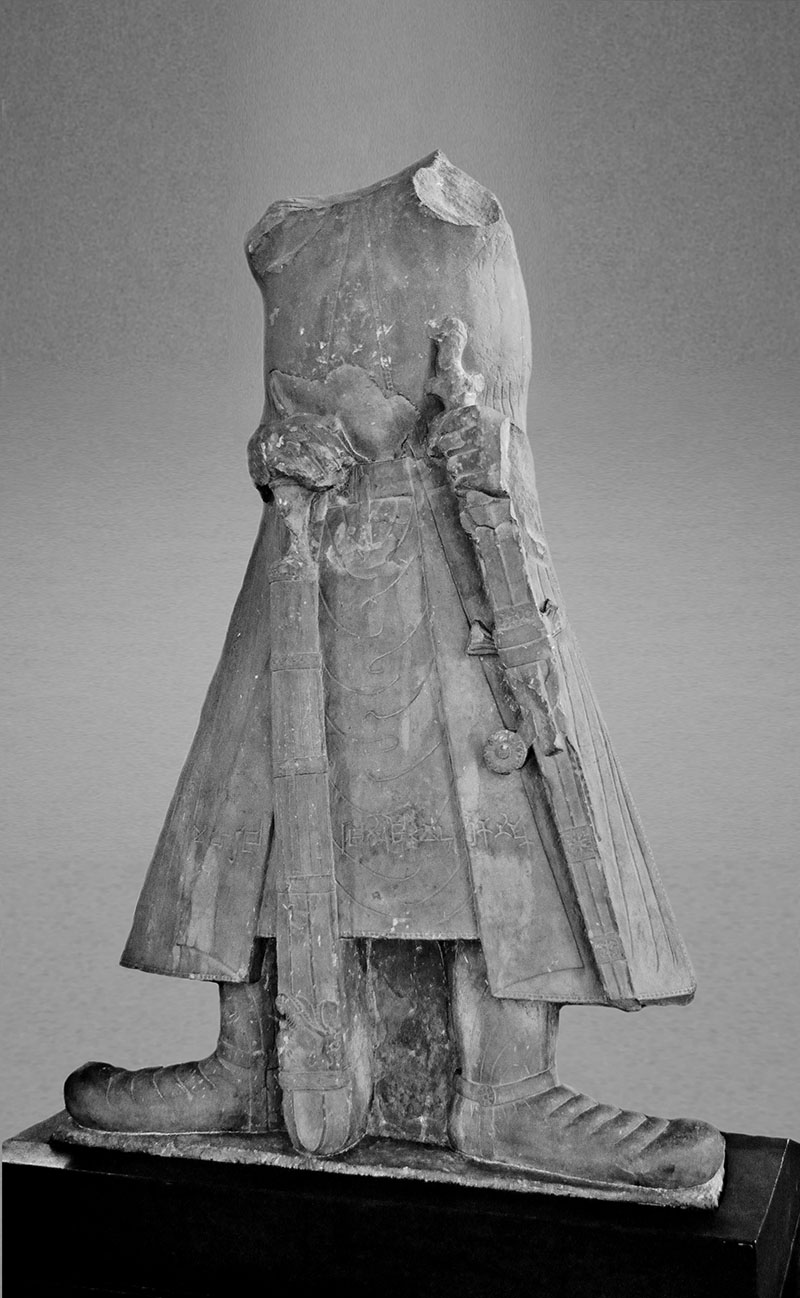Carved from red and white spotted sandstone, the statue of the Kushan emperor Kanishka was sculpted in the second century CE, possibly coinciding with the king’s reign. The statue was excavated near Mathura at the site of Mat, a shrine belonging to the Kushan Dynasty which was built as a southern parallel to the shrine at Surkh Kotal, Afghanistan. Despite the damage to the head, the figure has been identified as the emperor through an inscription on the statue itself.
Measuring 185 centimetres in height, the statue is carved in the flat, rigid Mathura style of the time. The statue is carved only on the front, suggesting that it would have been displayed against a wall. The arms and the head of the statue are lost, and the remains of the statue’s hands are positioned on the waist; the right-hand holds a giant club and the left-hand holds a sword. The club extends down to the plinth and ends in the head of a makara, a legendary sea-creature from Hindu mythology. The figure’s belt, shoe buckles, and the folds of its clothing are rendered in stylised bas relief lines, also characteristic of Mathura sculpture. The mantle and coat extend almost to the ankles, and the hem of both is bordered with bead-like incisions that may represent the fashion of the period. The boots appear padded and thick in profile as the feet are splayed open. The shape of the mantle and clothes do not correspond to the shape of the figure underneath, which contributes to the stiff appearance of the statue, conveying an impression of authority and power. Across the lower part of the tunic and coat’s folds, an inscription in Kharosthi reads “the great King, the King of Kings, the Son of God, Kanishka.”
Scholars have speculated that the heavy clothing that the sculpture wears might be considered out of place for the climate of Mathura. Historian Roy C. Craven has surmised that this could be due to the artist copying from an unfamiliar depiction of Kanishka, a theory that would explain the mismatched attire. Additionally, historian Vidya Dahejia has also written about Kushan kings setting up royal galleries to display their portrait statues, a provision that existed in Mathura (Mat shrine) and Surkh Kotal. Presumably, the construction of such shrines was motivated by a need to legitimise their ancestry and validate their right to kingship and power.
The statue of Kanishka is currently housed in the Government Museum of Mathura, Uttar Pradesh.







